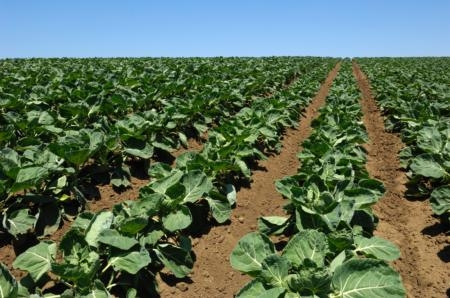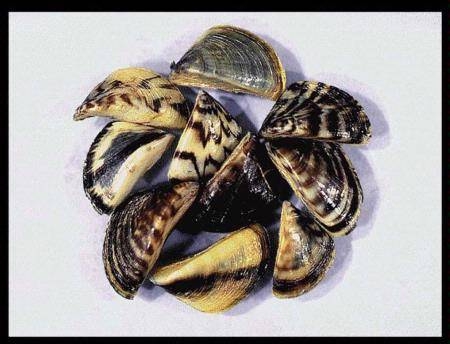
Posts Tagged: invasive aquatics
Ventura County Research Symposium
UC Hansen Agricultural Center, in collaboration with UC Cooperative Extension will hold the third annual Ventura County Research Symposium on November 16, 2011.
Growers, policy makers, community leaders, educators, journalists, and all who are interested in the future of agriculture in Ventura County are encouraged to attend. Learn how UC researchers confront invasive species.
Symposium highlights include:
- Overview of invasive species
- Giant Reed (Arundo donax L.) invasion in Ventura County
- Aquatic invader threat to water supply and native aquatic life
- Asian Citrus Psyllid – explorations for natural enemies
Scheduled speakers:
- Ben Faber, Ph.D., Farm Advisor,UC Coorperative Extension-Ventura County
- Dr. Adam Lambert, Research Ecologist, Cheadle Center for Biodiversity and Ecological Restoration, UCSB
- Leigh Johnson, Coastal Resources Advisor, UC Cooperative Extension-San Diego
- Mark Hoddle, Ph.D., Director of the Center for Invasive Species Research, UC Riverside
This event will be held from 8:30 am to noon at the Courtyard by Marriott in Oxnard. There is no cost to attend; however, registration is required. To learn more or to register, please visit this page of the UC Hansen Agricultural website. Questions? Please send them to sbmiller@ucdavis.edu or call 805-525-9293 ext. 214.

Responsible aquatic gardening
Aquatic gardening can provide additional beauty and tranquility to outdoor space. Many beautiful plants are readily available to add to backyard ponds. It is important, however, to avoid planting invasive species.
If invasive aquatic plants escape or are dumped into local waterways, including storm drains, serious ecological and economic harm may be caused. Without containment, they may travel for many miles and have a significant impact on waterways by:
- Growing in dense stands along the shore or thick mats in open water
- Crowding out native plants
- Reducing light and oxygen levels underwater, killing fish and other aquatic life
- Clogging intake valves of irrigation systems and power plants
- Reducing access to waterways for recreational and commercial boats
- Using more water than native plants, reducing water available for other uses.
To find out which plants to avoid and other important information, please see UC’s Aquatic Gardens, Not Aquatic Pests: How to Practice Responsible Water Gardening. This information is available in Spanish and Chinese.
Invasive species display
Beginning today and running through July 29, our office will have an invasive species display at the County of Ventura Hall of Administration building.
Viewers will learn the dangers and damage caused by these aquatic, plant and insect species and what can be done to reduce their introduction and spread. Handouts will be available for: Arundo donax, Scotch broom, New Zealand Mudsnails, Quagga and Zebra mussels, spotted winged drosophila, Asian citrus psyllid, gold spotted oak borer and redbay ambrosia beetle.
If you will not be at the government center during these dates but are interested in the information, please contact our office and we will be happy to provide the information electronically.
Invasive species
The global marketplace increases the likelihood of invasive pest and diseases entering California. Invasive pests and diseases can affect agricultural productivity, public health, natural resource biodiversity, and water quality and quantity.
The threat of invasive pests and disease is real in Ventura County. Please do your part in minimizing the potential impacts by:
- staying informed about local invasive pest and disease threats.
- notifying the CDFA or County Ag Commissioner if a suspected invasive pest is found.
- following guidelines and procedures designed to minimize the spread of pests and disease.
The current top invasive pest and disease threats to Ventura County, and what you can do to help, can be found on our previous blog posts.
Monitoring waterways for invasive quagga and zebra mussels
Invasive species in the Santa Clara River
Monitoring waterways for invasive quagga and zebra mussels
The University of California’s Early Detection Monitoring Manual for Quagga and Zebra Mussels publication defines aquatic invasive species (AIS) as ”non-native aquatic organisms that have caused, or likely will cause economic or ecological harm or impacts to human health (pg 1).”
Written by Ventura County UCCE’s Carolynn Culver and Monique Myers and Los Angeles County UCCE’s Sabrina Drill and Valerie Borel, this publication gives great background information while providing clear guidelines and instructions for monitoring small lakes, reservoirs and streams in California and is designed especially for citizen volunteer and monitoring groups. We hope that early detection of these species in California’s waterways will reduce their negative impacts. From the manual:
The sooner a population is detected, the more time there will be to take action and the higher the likelihood of successful eradication. Responding to an infestation at an early stage is also referred to as rapid response. Rapid response plans for AIS in general, and quagga/zebra mussels in particular, are being developed and updated in California (pg 1).”
For more information about these invasive species, check out the California Department of Fish and Game website at http://www.dfg.ca.gov/invasives/quaggamussel/. Anyone interested in monitoring a water body is encouraged to contact your local Fish and Game authorities to coordinate efforts.
The Early Detection Monitoring Manual for Quagga and Zebra Mussels is available for viewing in the Ventura UCCE office (please call first to make sure) and for purchase online at http://anrcatalog.ucdavis.edu/. Use promo code PRVEN56 at checkout to receive a 10% discount. For orders of five or more, please contact our office for bulk discount rates.

